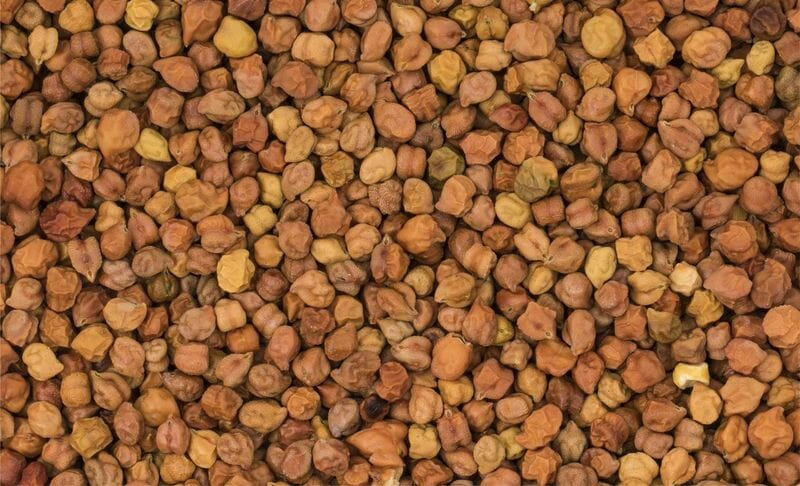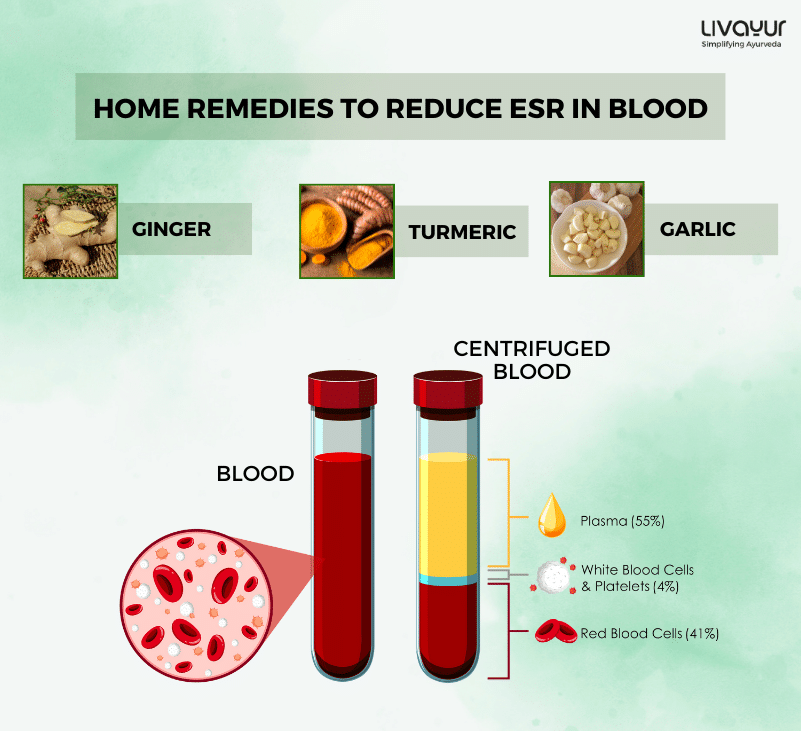
The humble legume known as “kala chana” is essential in Ayurveda. Referred to as “masha” in Ayurvedic texts, this unassuming legume has been cherished for centuries for its nutritional value and therapeutic potential. Ayurveda mentions several black chana health benefits and with its profound understanding of the interconnectedness between body, mind, and nature, it recognizes Kala Chana as a potent source of nourishment and healing. This article delves into the intricate wisdom of Ayurveda to explore the benefits of black chana, nutrition, side effects and more!
Nutritional value of Kala Chana [4]
Black chana nutritional value is immense as it contains plenty of nutrients like carbohydrates, fibre, proteins, vitamins and minerals.
| Nutritional component | Value per 100 gm |
| Energy | 368kcal |
| Protein | 20.5g |
| Fat | 6.04g |
| Ash | 2.85g |
| Sugar | 10.7g |
| Calcium | 57mg |
| Iron | 4.31mg |
| Zinc | 2.76mg |
| Magnesium | 79mg |
| Potassium | 718mg |
What is kala chana?
Kala chana, known as “masha,” is a significant bean with distinctive attributes. Ayurvedic wisdom characterizes it as a legume with a sweet taste but a hot potency. It is a valuable ingredient in addressing imbalances associated with the vata dosha. While its sweetness brings a soothing quality, its inherent warmth can serve to regularize and pacify vata-related disturbances.
Ayurveda lists several benefits of black chana. It tends to increase kapha and pitta doshas, which renders it beneficial for addressing health concerns. Black chana benefits for male include dealing with issues such as erectile dysfunction, low sperm count, and reduced sperm motility. It offers potential support for these conditions within the context of holistic well-being. [2]

What are the benefits and uses of kala chana?
From an Ayurvedic perspective, here are the benefits and uses of kala chana (masha).
- Snigdha nature
Kala Chana can be “snigdha,” indicating its unctuous quality, contributing to its lubricating properties. [1]
- Balya effect
This legume can be “balya,” signifying its capacity to increase strength and vitality. [1]
- Kapha and pitta enhancement
While it increases kapha and pitta doshas, it does so in a balanced manner, which can benefit certain health conditions. [1]
- Malakara and sara
Kala chana can be “malakara,” as it helps increase the bulk of feces, making it a helpful laxative due to its “sara” quality. [1]
- Ushna potency
One of the many kala chana benefits is its ability to mitigate vata due to its ‘ushna’ or hot potency.
- Shukra vruddhikara and virekakrut
This legume is suitable for “shukra vruddhikara” and “virekakrut,” indicating its potential to promote semen production and enhance ejaculation strength. [1]
- Mineral-rich
Kala chana is a storehouse of vital minerals, including calcium, potassium, iron, magnesium, copper, and manganese, enriching its nutritional content. [1]
- Vitamins and dietary fibers
Additionally, it contains vitamins and dietary fibers, adding to its nutritional value. [1]
- Aphrodisiac properties
Due to its high potassium content, kala chana can act as an aphrodisiac, potentially benefiting sexual health. Black chana benefits for males include its ability to enhance ejaculation and improve semen count. [1]
- Blood pressure regulation
The potassium content also helps balance sodium-potassium levels, which may aid in reducing hypertension or high blood pressure. [1]
- Topical application
In Ayurvedic practice, kala chana finds use in the form of a hot poultice for inflammation of joints and muscle pain. Massaging with herbal oil processed with masha can reduce pain, inflammation, and enhance muscle bulk. [1]
- Nervous system support
Kala chana can help address nervous system problems like nervous debility, partial paralysis, facial paralysis, and other related disorders. [1]
- Digestive aid
The benefits of black chana include its ability to deal with digestive issues. Its moistening effect and increased fecal bulk make kala chana recommended for conditions like constipation and piles, aiding digestive health. [1]
Ways to consume kala chana
Incorporating kala chana (masha) into one’s diet can be rewarding, given its myriad Ayurvedic benefits. Here are several health-conscious ways to consume and harness black chana health benefits.
- Boiled kala chana
The simplest and most traditional method is to boil kala chana until tender. Season it with spices like cumin, coriander, and ginger for added flavor and digestive benefits. This preparation can be a standalone snack or added to salads.
- Kala chana curry
Prepare a nourishing curry by simmering kala chana with varied spices and a tomato-based sauce. This hearty dish pairs well with rice or whole-grain bread.
- Sprouted kala chana
Sprouting kala chana enhances its nutritional value. After sprouting, you can consume them raw in salads or lightly sautéed with minimal seasoning for a crunchy, nutritious snack.
- Kala chana chaat
Create a healthy and flavorful chaat by mixing boiled kala chana with chopped vegetables like cucumbers, tomatoes, and onions—season with lemon juice, spices, and fresh herbs for a zesty and wholesome treat.

- Kala chana hummus
Blend cooked kala chana with tahini, garlic, lemon juice, and olive oil to create a kala chana hummus. It can be a dip for vegetable sticks or whole-grain crackers.
- Kala chana soup
Add kala chana into a hearty soup to vegetable or lentil-based soups. It enriches the nutritional content of the soup while providing a satisfying texture.
- Kala chana flour
Grind roasted kala chana into fine flour, which can help make gluten-free flatbreads or added to other flours for baking purposes.
- Kala chana snacks
Roasted kala chana can taste ideal with spices and enjoyed as a crunchy, protein-rich snack.
FAQs
1. What is black chana protein content?
Black chana contains approximately 16.84 grams of protein per 100 grams. [3]
2. Is black chana high in nutrition?
Black chana is highly nutritious and rich in protein, fiber, vitamins, and more. It is a healthy addition to a balanced diet. [1]
3. What is black chana in English?
In English, black chana is commonly called “black gram” or “black chickpea.”
4. What are some black chana recipes?
There are numerous black chana recipes, including black chana curry, roasted black chana snacks, black chana salad, black chana hummus, and more, offering diverse ways to enjoy its nutritional benefits.
5. What is black chana calorie content?
Black chana contains approximately 368 calories per 100 grams, making it an energy-rich food source. [3]
6. Is soaked black chana nutrition better for the body?
Soaking black chana before consumption can improve its digestibility and nutrient absorption. It can also reduce anti-nutrients, making nutrition more accessible to the body.
7. Can we eat black chana daily?
Yes, black chana can be consumed daily. Soaked kala chana benefits are immense and it can be an excellent addition to everyday diet due to its high nutritional value.
8. Is black chana good for skin?
Ayurveda mentions a host of black chana nutritional value. Moreover, due to its high zinc content consuming black chana can help improve skin texture and reduce acne.
Conclusion
From time immemorial several ancient texts and Ayurveda have mentioned the various benefits of black chana. Kala Chana, or “masha” in Ayurveda, emerges as a nutritional powerhouse with many benefits rooted in its Ayurvedic attributes. Its unctuousness, potency, and diverse qualities make it a versatile addition to one’s dietary and therapeutic regimen. The rich array of minerals, vitamins, and dietary fibers, coupled with its potential to address specific health concerns, highlight its significance in holistic well-being.
To harness the kala chana benefits, consider incorporating it into your daily diet through boiled or sprouted preparations or explore flavorful recipes like curry and chaat. Remember that soaking the legume can enhance its nutritional value and digestibility. Whether seeking to support digestion, nourish the nervous system, or strengthen vitality, kala chana is a testament to Ayurveda’s enduring wisdom in promoting overall health.
Disclaimer
This article is from a health and wellness perspective only and does not constitute medical advice. Kindly seek the help of a trained medical practitioner before initiating any treatment.
References
- SHIMBHI DHANYA VARGA(GROUP OF LEGUMES AND PULSES): PREVENTIVE AND CURATIVE PERSPECTIVE.
- DEVELOPMENT AND SENSORY EVALUATION OF “URAD KASAR (SWEET DESSERT)”: RESEARCH ARTICLE. 11 February 2022
- KALA CHANA.
- FoodData Central [Internet]. [cited 2022 Aug 9]
- Lessons From Epithelialization: The Reason Behind Moist Wound Environment. 2019



















